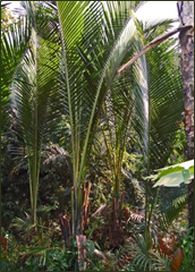|
|
|
|
|
SELANGOR, Malaysia, June 18, 2015 - (ACN Newswire) - Waste material generated by Malaysia's sago palm industry has potential for use as an adsorbent for cleaning up oil spills, according to a study published in the Pertanika Journal of Science and Technology.
 | | Using Sago Waste to Absorb Oil Spills |
Conducted by Zainab Ngaini and colleagues at the Universiti Malaysia Sarawak, the study found that when sago waste (consisting primarily of cellulose and lignin) is chemically modified using fatty acid derivatives, the resulting material is more hydrophobic than untreated sago waste, implying that it has less affinity for water and an excellent affinity for oil.
The authors conclude that chemically modified sago waste may be suitable for applications where engine oil needs to be removed from an aqueous environment. By contrast, untreated sago waste could be used for absorbing oil in a dry environment.
Sago palm is commonly found in tropical lowland forests and freshwater swamps. Sarawak is one of the world's largest exporters of sago products with annual exports of approximately 43,000 tons. However, the mass production of sago produces large amounts of waste residues. From 600 logs of sago palm per day, an estimated 15.6 tons of woody bark, 237.6 tons of waste water and 7.1 tons of starch fibrous sago pith residue are generated. Currently, sago pith residues are either incinerated or discharged into waterways, which eventually contributes to environmental problems.
Until now, no studies have examined sago waste's potential as an oil adsorbent, despite its resemblance to previously studied natural oil sorbents such as cotton, wool and bark.
For more information about each research, please contact:
Zainab Ngaini
Department of Chemistry
Faculty of Resource Science and Technology
Universiti Malaysia Sarawak
E-mail: nzainab@frst.unimas.my
Tel: +603 082-581000 ext 2992; Mobile: +6016 8860 502.
About Pertanika Journal of Science & Technology (JST)
Pertanika Journal of Science & Technology (JST) is published by Universiti Putra Malaysia in English and is open to authors around the world regardless of nationality. Currently, it is published twice a year in January and July. Other Pertanika series include Pertanika Journal of Tropical Agricultural Science (JTAS), and Pertanika Journal of Social Sciences & Humanities (JSSH).
Pertanika Journal of Science & Technology aims to provide a forum for high quality research related to science and engineering research. Areas relevant to the scope of the journal include: bioinformatics, bioscience, biotechnology and bio-molecular sciences, chemistry, computer science, ecology, engineering, engineering design, environmental control and management, mathematics and statistics, medicine and health sciences, nanotechnology, physics, safety and emergency management, and related fields of study.
Website: http://www.pertanika.upm.edu.my/
The paper is available from this link: http://bit.ly/1N4vFaQ
For more information about the journal, contact:
The Chief Executive Editor (UPM Journals)
Head, Journal Division, UPM Press
Office of the Deputy Vice Chancellor (R&I)
IDEA Tower 2, UPM-MDTC Technology Centre
Universiti Putra Malaysia
43400 Serdang, Selangor
Malaysia.
Phone: +603 8947 1622 | +6016 217 4050
Email: nayan@upm.my
Press release distributed by ResearchSEA for Pertanika Journal.
Topic: Research and development
Source: Pertanika Journal
Sectors: Gas & Oil, Water, Chemicals, Spec.Chem, Materials & Nanotech, Science & Research, Environment, ESG, Environment, ESG
https://www.acnnewswire.com
From the Asia Corporate News Network
Copyright © 2026 ACN Newswire. All rights reserved. A division of Asia Corporate News Network.
|
|
|
|

|
|
|
|